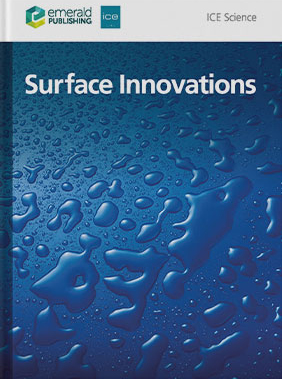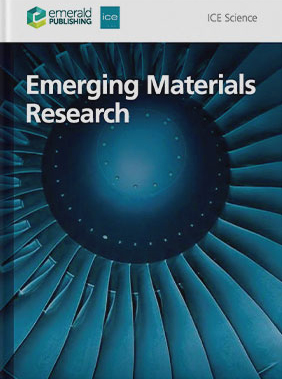
Emerging Materials Research
Manuscript preparation guidelines for journal authors - Science
ICE Publishing Science journals aim to bring together communities that traditionally work in silos to ensure that important discoveries and applications are accessible to all, inspiring fresh thinking in how breakthrough research can be practically applied to make energy, materials and medicines ever more efficient and effective.
All of our science titles publish online only to encourage fast publication and wide dissemination of work.
All papers submitted to our science titles should:
- Clearly identify the novelty or advance presented to the field.
- Related to the aims and scope of the selected journal.
- All claims should be evidence, justified and not exaggerated.
All of our science titles broadly follow the guidelines below. More specific instruction may be found on the journal homepage of the title that you are submitting to. Each paper submitted to us is independently peer reviewed to ensure the highest standards of timeliness, technical accuracy and interest to our readers.
Types of content
- Research articles (7,000 words)
An original report of primary research, detailing techniques and approaches, and the work’s contribution to the field. - Short communications (3,000 words)
A short report of original and highly significant work, detailing preliminary results and warranting rapid publication. Also includes technical notes, relating to the latest technological, experimental or methodological developments within the authors field and should refer to the intended application. - State-of-the-art reviews (9,000 words)
An up-to-date summary of knowledge on a particular subject or issue in the field and representing an overview of recent developments. - Perspectives (2,000 words)
Brief, accessible pieces highlighting a wide variety of current topics in the field. - Discussion contributions (1,000 words)
A medium for the exchange of opinions on material published in the chosen journal title or general issues under discussion in the relevant scientific community. These will be sent to the Editor first to assess their suitability to the journal. If commenting on a published paper, the original author will be given the right of reply. - Book reviews (500 words)
A book review provides a short description of an academic title and evaluates its quality and contribution to the particular field in question. Highlight a topic of high general interest, not necessarily limited to scope of the journal but the focus of the article is scientific.
Word limits do not include title, abstract or references. If your article exceeds these restrictions, you can upload the additional information as supplementary data. More information on our supplementary information policy can be found here.
Format and elements of submitted texts
Please prepare your main text document in Microsoft Word, we have a template available should you need it. We also accept Latex files, manuscripts must be submitted using our template along with a PDF copy of the manuscript.
Please note that the style that you submit your paper in (e.g. any additional italics or bold fonts, bullet points, etc.) may be changed on publication to accommodate our house style.
Style
- The text should be written in the third person and in UK or US English; but consistently one and not a mixture of both.
- The manuscript should be written in plain English. If in doubt, please consult a native English speaker or language editing service.
- ICE Science journal style follows appendix 10-2 of The ACS Style Guide, 3rd edn (Coghill AM and Garson LM (eds)) regarding abbreviations, acronyms and symbols which should be written out in full or defined at their first appearance in the manuscript text.
- The terms, including nomenclature and abbreviations, as well as style should be consistent throughout the text. Please bear this in mind when collaborating with other authors on the text.
- Referring directly to the names of individuals, organisations, products or services is forbidden unless essential to the comprehension of the manuscript. Gratuitous flattery or derogatory remarks about any person/organisation should not be included.
- Principal participants in a project should be listed separately in a table or acknowledgement at the end of the text. If a person/client is involved, you should seek their permission to detail the project.
- Footnotes: We do not accept footnotes.
- Symbols and Units: SI and derived units should be used, including for historical structures.
- Abbreviations: The use of common or standard abbreviations is allowed. If non-standard abbreviations are used these should be defined on first use.
- Use bullet points rather than numbered lists.
- Text should be supplied 1.5 line space or double spaced.
First Page
On the first page of your main text document please provide:
- The date that the text was written or revised.
- Title of paper (please see below for guidance on titles).
- Full names and post-nominal letters of author(s).
- Positions, affiliations and ORCID number of author(s).
- Contact address and email address of all authors.
- Number of words in the main text (excluding abstract and references) and the number of figures and tables.
- Please DO NOT include your personal telephone number on the title page.
Title
Titles are limited to 90 characters, including spaces. Please avoid the use of any abbreviations, acronyms or formulae. Titles should clearly reflect the content of the manuscript and any search terms that readers may use should be considered and incorporated.
Abstract
Please provide a 150 ̶ 200 word summary of the submission (communications and research articles only). This should be a concise reflection of the aims, findings, conclusions and any interesting or important results. It should also explain the article’s relevance to the journal that it is being submitted to. It should contain no references; abbreviations that are not commonly used should be defined (for the benefit of the non-specialist reader) at first use.
List of notations
Please provide a list of symbols and definitions used in the text that would be helpful for the reader.
Keywords
These are used for indexing your article on ICE Virtual Library (this website). Please select a minimum of three keywords from this MS Excel file (if it displays as symbols on a webpage, try opening them in a browser other than Internet Explorer). When you submit your article, you may also type in keywords not on this list.
Introduction
A concise, accurate, but not exhaustive, summary of current knowledge, with reference to relevant previous and recent works in the field should be presented. This should be accompanied with the aims of and justification for the work contained in the submitted manuscript.
Main Text
Your text will be checked against a list of commonly used terms in chemistry and abbreviations used according to house style.
Results and discussion
The results should be reported clearly and interpreted accurately, and a followed by a discussion, which fairly assesses them, including their significance. Figures/tables can be used to support these findings, but data must not be reproduced in more than one form.
Experimental
The methods and processes applied to investigate and achieve the aims should be communicated in sufficient detail that readers could repeat the work successfully.
Conclusions
A concise summary of the findings and a clear identification of the advance/contribution that this work provides to the field. No new information should be introduced here.
Appendices
Additional information, such as tables or mathematical calculations/derivations can be included and should be clearly referred to, from the main text, as belonging to the appendix. These will be included in the print and online versions of the article.
Acknowledgements
Please provide details from those (individuals and institutions) other than co-authors that contributed to the paper. Additional details required by funding bodies can be placed here too, as well as information about the source of the work (i.e., based on a presentation etc.)
Ethics
Any associated safety, environmental or ethical issues should be declared.
References
Please add a list of literature cited in the manuscript at the end of the text. Vancouver style (numbered) referencing is used in ICE Science papers.
Unpublished material should not be included in the reference list.
- If an article has been submitted but not yet accepted, it should only be cited within the text and not the reference list. For example, at the first citation '(see 'Title of publication' by Author, submitted to Journal)'. Subsequent citations can be presented as 'Author (submitted)' or '(Author, submitted)'.
- If an article has been submitted and accepted but is not yet published, it should be included in the reference list with ‘in press’ at the end. A DOI number should be included where possible.
Mathematical equations
Only relevant equations should be included in the main text and should be numbered – anything else can be added as an appendix or as supplementary information. Simple, single line equations can be written using word; an equation editor program is required for more complex formulae.
Figures and tables caption list
Please supply a figure caption list at the end of your main text document. Figures and tables must be mentioned in the text in consecutive order, but as different sets (ie, Figure 1, Table 1 etc.) All figures must have a brief title accompanied with a short description that can be able to be understood without reference to the main text.
Figures
All figures must be uploaded individually and separately from the main text. Examples of figures and guidance on filetypes can be seen on our Figure Guidance page. For specific advice and step by step guidance on accepted file formats and our figure requirements please open, download and save our figure guidelines PDF.
If reproducing or adapting figures from other published work, this must be referenced in the caption and appropriate permissions sought. Please see our copyright permissions page for more information.
Corresponding Authors
We only permit one corresponding author per submission. Co-authors can be added, their email addresses and institutions must be provided.
Author Photos
Authors are encouraged to provide a passport style photograph of themselves. These will be published only if a file for every named author is provided.
Supplementary information
Additional information, data and other material that may enhance the manuscript but is not necessary to the conclusions can be uploaded as supplementary material. Any reference to supplementary information in the main text should be referred to as, e.g., Figure S1. Further details are available on our supplementary information policy.
Next Steps
Once you have completed your manuscript preparation, please go through this submission checklist. When you are ready, please upload your MS Word document text, and separate high-resolution image files, to the journal submission website. All of our journals use ReView, a manuscript management system - all articles must be uploaded through this.
We have more instructions on how to submit your article. This will save you emailing large files through to us. Please do not submit all of your files as one PDF. You will receive a confirmation email once you have successfully submitted your paper online.
Copyright Information
Information on copyright, including text extracts and the reuse of permission published elsewhere, can be found via our Copyright and Permissions page.
If you have any queries, please contact the editorial office.
-
Editor-in-Chief
-
Hongbo
Gu
Tongji University - P.R. China
-
Frédéric
Heim
Universite de Haute Alsace - France
-
Hongbo
Gu
-
Founding Editor
-
Nuggehalli
Ravindra
New Jersey Institute of Technology - USA
-
Nuggehalli
Ravindra
-
Associate Editors
-
Nakshatra
B Singh
Sharda University - India
-
Adele
Carrado
Universite de Strasbourg - France
-
Chiranjivi
Lamsal
SUNY Plattsburgh - USA
-
Sarang
Muley
DW National Standard Stillwater LLC - USA
-
Heinz
Palkowski
TU Clausthal - Germany
-
Amit
Pandey
Lockheed Martin Space - USA
-
Ramanand
Rai
Hindu University - India
-
Sita
Rajyalaxmi Marthi
New Jersey Institute of Technology - USA
-
Angel
Romo-Uribe
Johnson & Johnson Vision Care, Inc - USA
-
Peng
WANG
Laboratory of Textile Physics and Mechanics (LPMT), University of Haute-Alsace - France
-
Liang
Zhou
Shanghai Jiao Tong University School of Medicine - P.R. China
-
Nakshatra
B Singh
-
Publisher
-
Alessandra
Morelli
Emerald Publishing - UK
[email protected]
-
Alessandra
Morelli
-
Journal Editorial Office (For queries related to pre-acceptance)
-
Meghna
Arya
Emerald Publishing - India
[email protected]
-
Meghna
Arya
-
Supplier Project Manager (For queries related to post-acceptance)
-
Manmeet
Nirmal
Emerald Publishing
[email protected]
-
Manmeet
Nirmal
Citation metrics
4.5
CiteScore 2023
4.5
CiteScore 2023
Further information
CiteScore is a simple way of measuring the citation impact of sources, such as journals.
Calculating the CiteScore is based on the number of citations to documents (articles, reviews, conference papers, book chapters, and data papers) by a journal over four years, divided by the number of the same document types indexed in Scopus and published in those same four years.
For more information and methodology visit the Scopus definition
3.0
CiteScore Tracker 2024
(updated monthly)
3.0
CiteScore Tracker 2024
(updated monthly)
Further information
CiteScore is a simple way of measuring the citation impact of sources, such as journals.
CiteScore Tracker is calculated in the same way as CiteScore, but for the current year rather than previous, complete years.
The CiteScore Tracker calculation is updated every month, as a current indication of a title's performance.
For more information and methodology visit the Scopus definition
1.30
2023 Impact Factor
1.30
2023 Impact Factor
Further information
The Journal Impact Factor is published each year by Clarivate Analytics. It is a measure of the number of times an average paper in a particular journal is cited during the preceding two years.
For more information and methodology see Clarivate Analytics
1.2
5-year Impact Factor (2023)
1.2
5-year Impact Factor (2023)
Further information
A base of five years may be more appropriate for journals in certain fields because the body of citations may not be large enough to make reasonable comparisons, or it may take longer than two years to publish and distribute leading to a longer period before others cite the work.
Actual value is intentionally only displayed for the most recent year. Earlier values are available in the Journal Citation Reports from Clarivate Analytics.
Publication timeline
Time to first decision
33
days
Time to first decision
33
days
Further information
Time to first decision, expressed in days, the "first decision" occurs when the journal’s editorial team reviews the peer reviewers’ comments and recommendations. Based on this feedback, they decide whether to accept, reject, or request revisions for the manuscript.
Data is taken from submissions between 1st January 2023 and 31st December 2023
Acceptance to publication
4
days
Acceptance to publication
4
days
Further information
Acceptance to publication, expressed in days, is the average time between when the journal’s editorial team decide whether to accept, reject, or request revisions for the manuscript and the date of publication in the journal.
Acceptance rate
34
%
Acceptance rate
34
%
Further information
The acceptance rate is a measurement of how many manuscripts a journal accepts for publication compared to the total number of manuscripts submitted expressed as a percentage %
Data is taken from submissions between 1st January 2023 and 31st December 2023.
Indexing and metrics content displayed here
Covering materials process, structure, properties and performance at the macro micro and nanoscale.
eISSN: 2046-0155
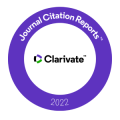






Aims and scope
Materials research is constantly evolving and correlations between process, structure, properties and performance which are application specific require expert understanding at the macro-, micro- and nano-scale.
The ability to intelligently manipulate material properties and tailor them for desired applications is of constant interest and challenge within universities, national labs and industry.
Each year we award authors from both industry and academia who have produced work judged by their peers to be of exceptional quality and benefit to the civil engineering, construction and materials science community. Papers outside of our archive (published after 2002) are free to read here in perpetuity as part of our commitment to furthering knowledge and best practice.

This title is aligned with our sustainable structures and infrastructures goal
We recognise the transformative power of sustainable engineering, design and building practices in creating a world where our planet and its inhabitants can thrive.

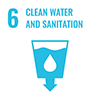
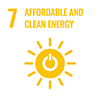
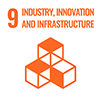
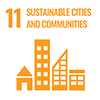
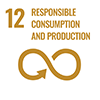
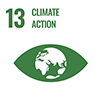
Related Journals
These journals are part of our ICE Science titles. Explore our ICE Publishing journals collection to find out more.
Bioinspired, Biomimetic and Nanobiomaterials
Papers on the promising area of research within biomimicry and nanobiomaterials.
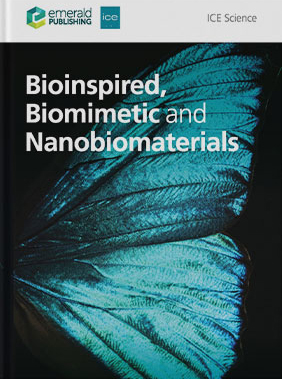
Nanomaterials and Energy
Papers exploring the various aspects of nanomaterials and their applications in energy.
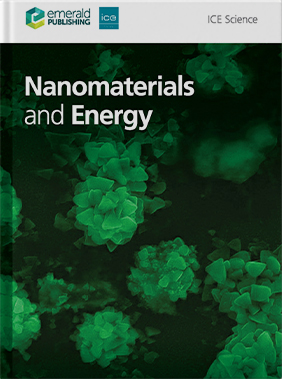
Green Materials
Papers on polymers and materials reducing the use of hazardous substances in products.
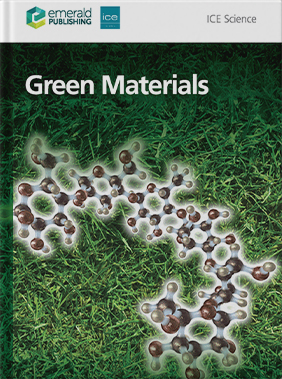
Surface Innovations
Novel research into improvements and applications of surfaces and surface coatings.
